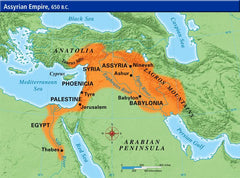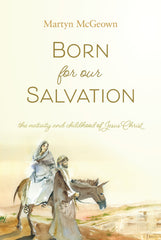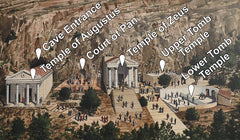Your cart is empty now.

Translations in Focus - Reformed Education (Spanish)
This month on the blog, we're looking forward to the RFPA Annual Association meeting in September by highlighting our translations. Today's "translation in focus" is the Spanish translation of Reformed Education. Read on for side-by-side excerpts from chapter 1 of Educación Reformada: La Escuela Christiana Como Demanda Del Pacto (translated by Doner Bartolon)!
__________
Chapter 1: The Covenant Basis of Christian Education
And thou shalt teach them diligently unto thy children, and shalt talk of them when thou sittest in thine house, and when thou walkest by the way, and when thou liest down, and when thou risest up.—Deuteronomy 6:7
In this opening chapter, I consider the basis of Christian day-school education. I answer the question, “Why do we maintain Christian schools?” At the same time, I answer the question, “What are we really doing in this education?” I want to show that the basis is God’s covenant, the one covenant of grace in both Old and New Testaments, and that, therefore, Christian education is, and must be, through and through, covenantal.
The entirety of Reformed, Christian education is really contained in this truth and can be subsumed under the heading of God’s covenant, just as all doctrine is really included in theology, and the entire Heidelberg Catechism is included in its first question. I must be careful here not to follow the example of the notorious Reformed preacher who preached some seventy sermons on Lord’s Day 1 of the Catechism, thus exhausting the Catechism—and himself—before he ever came to Lord’s Day 2. I will develop some of the implications of the covenantal basis of Christian education in this chapter and postpone the treatment of others to later chapters.
It may be well to note at the outset that I use the terms “Christian education,” “Reformed education,” and “Protestant Reformed education” interchangeably in this book since to me they are all one.
It is of the utmost importance that there be knowledge among us of the basis of Christian education. By “knowledge” is meant the knowledge of conviction. Parents and teachers alike should know the basis. The entire endeavor of Christian education depends on it! And a large endeavor it is in terms of time, money, energy, and struggle. Especially when the going gets tough, knowledge of the basis is crucial. It is crucial for parents who must sacrifice to pay tuition. It is crucial for teachers who may have heavy workloads, suffer thanklessness and criticism, and, in some cases, be paid little besides. It is crucial for school boards when they wrestle with knotty problems and become involved in painful conflicts.
Also, the basis determines the nature of the instruction of the Christian school. Indeed, it determines every aspect of the school. It must be allowed to shape everything. We must be true to the basis. We must be “radical,” defined as going back to the root. Associations, school boards, administrators, and teachers must answer all questions in the light of the basis and must make all decisions in accord with that basis. All instruction, from bodily exercise to geometry, must be founded on and shaped by that basis. Nor may we be averse to examining our entire system from the viewpoint of the basis: grades and grading, values and emphases, subjects, and teaching methods. To be Reformed is to be constantly reforming. We certainly may not uncritically accept “standard procedures” of education, either in the world or among other Christians.
Another reason it is necessary to know the basis of Christian education is that other bases are being proposed today. This is done by fundamentalistic-evangelistic groups, by “Reformed” humanists, and by the movement in North America that today is associated with the Institute for Christian Studies (ICS) in Toronto, Canada, which formerly called itself the Association for the Advancement of Christian Scholarship (AACS). We must be able to resist these educational philosophies. We must have Reformed, Christian schools that are founded on another basis than those which these movements propose.
To many, the subject of the basis of Christian education in the covenant is familiar. This does not mean that our repeated study of it is unnecessary. The Dutch educator T. van der Kooy gives us a warning:
If in the welter of our routine studies and activities, we do not, even though it be only occasionally, devote ourselves to the consideration of educational principles, there is great danger that the enthusiasm which was at one time felt for the Reformed principles, will finally be extinguished. And then, too, the danger is no less real that we lose ourselves in a superficial Christianity; that we look with contempt on all argument about principles, and in practice sing the praises of a Christianity above all creeds. It is beyond question that then our Christian school movement would be dealt a mortal blow. Or there would result a cold and petrified conservatism, a subsisting on the capital acquired in the past, without renewed contact with contemporary life.[1]
Capítulo 1 La base del pacto de la educación cristiana
-
The Basis Explained
The covenant is the relationship of friendship between God and his people in Jesus Christ. It is a vibrant relationship of mutual knowledge and love, represented in Scripture not as a lifeless contract but as a marriage, or as a father-child relationship. For us men, women, and children, it is the enjoyment of salvation and life itself. It is the greatest good, the chief end of man, and the purpose both of creation and redemption.
In the covenant, God is our God, and we are his friend-servants. This implies that we have a calling in the covenant, that we have work to do. The calling is, Love Jehovah your God, serve him, and glorify him. This is not something arbitrarily added to the covenant, but is an integral part of the covenant itself, just as a wife’s submitting to and helping her husband is an integral part of marriage and as a son’s doing the will of his father is an integral part of the father-child relationship. Our performance of our calling, by grace, is the fulfillment of man, what it means to be truly and fully man. It is, according to the literal translation of Ecclesiastes 12:13, “the whole of man.” This is delightful, joyful activity—the work for the sake of which we eat. “Blessed is the man…[whose] delight is in the law of the Lord; and in his law doth he meditate day and night” (Ps. 1:1–2).
God’s covenant is cosmic. It extends to, and brings into its compass, the entire creation of God and all creatures in the creation, organically considered. This is an aspect of the covenant that is of the greatest importance for Christian day-school education by virtue of the fact that the Christian school gives instruction concerning the whole of creation. The cosmic character of the covenant is a truth that is not sufficiently stressed, explained, or understood among us. Usually it comes up in an apologetic, negative way when we (rightly) argue that the “world” of John 3:16 is not “all men” and when we (rightly) argue that the covenant of Genesis 9 is not a covenant of “common grace.” There is need for a positive development of the truth of the cosmic covenant in its own right and for an application of it to the Reformed life in general and to Christian education in particular.
God has established his covenant with Christ, not only (although chiefly) as head of the elect church, but also as head of creation. Christ is the one in whom, according to the mystery of the eternal will of God, all things in heaven and on earth are to be gathered together (Eph. 1:9–10). Christ is the one by whom and for whom all things were created and by whom all things consist (Col. 1:16–17; the literal translation is “and all things in him cohere”). In Christ, the covenant is established with the creation itself, or the universe, we might say. This is the explicit teaching of Genesis 9 and of Romans 8:18–22: God’s covenant is with the earth and every living creature, and the creation itself shall share in the glorious liberty of the children of God. This is one solid reason a Reformed man may not renounce the created world in order exclusively to cultivate the life of his soul. Not only is the creation the sphere of operations for God’s love and salvation of us, and for our love and service to God, but also there is a relation between God and the creation. God knows and loves His creation, and the creation knows and loves its God, not apart from man, but through the man, Jesus Christ, the last Adam.
Still another essential aspect of the covenant is that God graciously establishes his covenant with believers and their children in the line of continued generations. This is a fundamental element of the covenant in both testaments. It is the divine “way of the covenant in history.” Like the covenant as a whole, this aspect is grounded in the being of God. The covenant, as a bond of fellowship, reflects the triune life of God: the living communion of knowledge and love of Father and Son in the Spirit. That the covenant runs in the line of generations reflects the fatherhood and sonship of God in himself. The fact that the covenant promise refers to the elect children of believers, and that not all their children are graciously received by God into the covenant, does not overthrow the truth itself, does not detract from the great significance of the truth, and does not affect the calling that parents have to teach all of their children.[2]
La base explicada
-
The Covenant Basis Applied
If the basis of Christian education is the covenant, it follows that the Christian school is and must be parental. God’s covenant is with believing parents and their children, and God’s command to rear the children comes to parents. The state must be kept out entirely. It has neither the mandate nor the ability to carry out the mandate. The wedge, of course, by which the state always attempts to intrude itself into the school is financial support. To the state that offers aid, we ought to reply as Zerubbabel and Jeshua did to their sly foes in Ezra 4:3: “Ye have nothing to do with us to build an house unto our God; but we ourselves together will build unto the Lord God of Israel.” We do well to remember that it was dependence on the state that spelled the doom of Luther’s noble movement for Christian education. By remaining free of the state, we may very well keep our schools right up to the time of Antichrist. From then on, the time will be short.
Parochialism is also to be avoided. The danger is not so much that an apostatizing church will also corrupt the schools, for inevitably a decaying church corrupts even the free schools of its members. But the danger is that the parents simply “let the instituted church do it.” It is possible that parochialism contributed to the failure of the Christian school movement among orthodox Presbyterians in the 1800s and early 1900s.
This by no means implies that the total financial responsibility is allowed to fall on parents whose children happen to be in the schools at any given time. In the covenant, grandparents have a responsibility towards, and delight in, the covenant rearing of their grandchildren. Young married couples and even young people desire the school to be available when their children are of school age. Indeed, all of the covenant people should take an interest in this basic aspect of the covenant of God.
From the covenant basis, it also follows that the school is for covenant children. Children outside the covenant—children of unbelieving parents—are not to be accepted. In my judgment, we should accept children from outside the Protestant Reformed Churches, and even from outside the Reformed denominations, but only on the condition that the parents evidence true faith in Christ and are motivated by the desire that their child receives a Christian education.
The school is for all the covenant children. It is not for the bright or college-bound children only. The covenantal character of the school would demand that special attention be paid to the inferior student. In the kingdom the law is that we “bestow more abundant honour” on the “less honourable” members of the body (1 Cor. 12:23).
Are our schools for all the children? Or is the instruction, the pressure of assignments, the grading, and even the attitude of the teacher such that some—perhaps even a sizable percentage—are virtually excluded? In our standards and procedures, or perhaps in our adherence to the state’s standards, are we true to the basis, the covenant of God, specifically his demand to rear all the children?
This is no plea for vocational education for some, say in high school, for I hold that all the children should have a thorough liberal arts education, at least through high school. In fact, I warn against watering down this education by giving in to the clamor for vocational training, either in the school or outside. Gordon H. Clark rightly excoriates many public high schools as “glorified vocational nurseries.”[13]
In keeping with the fact that the schools are for covenant children, the teacher must view and approach the children as covenant children, that is, as those who are fallen in Adam but sanctified in Christ, although imperfectly![14] That not all are sanctified does not weigh against this injunction. The difference that this view of the student makes for all of the education—in distinction from other views taken in education, such as Rousseau’s view of the child as inherently good, the modernist’s view of the child as religiously indifferent, and the fundamentalist’s view of the child as a heathen to be wooed to Christ—is simply incalculable. One important implication of this covenantal view of the student is that the teacher demands that the child behave as a covenant child; discipline is called for. In the case of older children, expulsion from school may be in order, which then must be followed by the discipline of the church. Laxity and disorder are out of the question.
A final application of the truth that the basis is the covenant, one to which we will return, is that the teacher is to rear the child in the education of Christ, teach the child diligently the words of love for God, and bring the child up in God’s fear. To be sure, the teacher does this in the manner appropriate to the sphere of the school. But he must do this, for the very basis of the school, and of his office, demands this work and nothing less: “And thou shalt teach them diligently unto thy children.”
La base del Pacto aplicada
[1] T. van der Kooy, The Distinctive Features of the Christian School, trans. three members of the Calvin College faculty (Grand Rapids, MI: Wm. B. Eerdmans Publishing Co., 1925), 14.
[1] T. van der Kooy, Las características distintivas de la escuela cristiana. Trans. tres miembros de la facultad del Calvin College (Grand Rapids, MI: Wm.B. Eerdmans Publishing Co., 1925), 14.
[2] For a more detailed description of the covenant of grace and the place in it of the children of godly parents, see David J. Engelsma, “The Covenant of God and the Children of Believers” (South Holland, IL.: Evangelism Committee of the Protestant Reformed Church, 1990) and Herman Hoeksema, Believers and Their Seed: Children in the Covenant, rev. ed. (Grandville, MI: Reformed Free Publishing Association, 1997). On the source and pattern of the covenant in the triune being of God as family-fellowship, see David J. Engelsma, Trinity and Covenant: God as Holy Family (Jenison, MI: Reformed Free Publishing Association, 2006).
[2] Para una descripción más detallada del pacto de gracia y el lugar en él de los hijos de padres piadosos, véase David J. Engelsma, "El pacto". de Dios y los hijos de los creyentes" (South Holland, IL.: Evangelism Committee of the Protestant Reformed Church, 1990) y Herman Hoeksema, Los creyentes y su simiente: Los hijos en el pacto, rev. ed. (Grandville, MI: Reformed Free Publishing Association, 1997). Sobre la fuente y el modelo del pacto en el ser trino de Dios como compañero de familia, véase David J. Engelsma, Trinidad y Pacto: Dios como Sagrada Familia (Jenison, MI: Reformed Free Publishing Association, 2006).
[13] Gordon H. Clark, A Christian Philosophy of Education (Grand Rapids, MI: Wm. B. Eerdmans Publishing Co., 1946), 155.
[13] Gordon H. Clark, Una filosofía cristiana de la educación (Grand Rapids, MI: Wm.B. Eerdmans Publishing Co., 1946), 155.
[14] On the Reformed approach to and view of the baptized young children of believers, see Engelsma, “The Covenant of God” and David J. Engelsma, “As a Father Pitieth His Children: Reformed Child-Rearing” (Grand Rapids, MI: Evangelism Committee of the First Protestant Reformed Church, 1998 reprint).
[14] Sobre el enfoque reformado y la visión de los hijos pequeños bautizados de los creyentes, véase Engelsma, "El Pacto de Dios" y David J. Engelsma, "Como padre Pitieth, sus hijos: crianza reformada de los hijos" (Grand Rapids, MI: Comité de Evangelismo de la Primera Iglesia Protestante Reformada, reimpresión de 1998).
__________
We celebrate the labor of many hours on the part of author, illustrator, and translator in bringing this and our other wonderful works to life!
Interested in other translations of RFPA works? Check out the website of the Covenant Protestant Reformed Church in Ballymena, Northern Ireland. The site houses links to Reformed material in dozens of languages, including excerpts of many RFPA materials.
Interested in the process of translation? The RFPA maintains contracts with many freelance translators in the Reformed world, but we're always looking to add to that list. Follow this link for the CPRC FAQs on translation.
_________
The content of the article above is the sole responsibility of the article author. This article does not necessarily reflect the opinions and beliefs of the Reformed Free Publishing staff or Association, and the article author does not speak for the RFPA.

Donate
Your contributions make it possible for us to reach Christians in more markets and more lands around the world than ever before.
Select Frequency
Enter Amount











